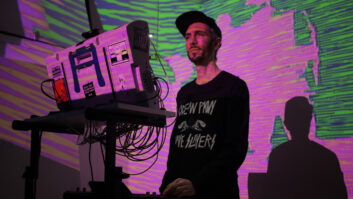Last year’s first-half increase in prerecorded music sales may have been a fluke.
In 2004, first-half unit and dollar sales interrupted a four-year string of consecutive first-half declines, but this year, the music industry has returned to its losing ways. First-half unit and dollar sell-through, after returns, wound down by 5.8 percent and 5.3 percent, respectively, following 2004’s first-half gain of 4 percent and 3.6 percent, according to the Recording Industry Association of America (RIAA).
Sales are heading down, claimed RIAA’s chairman/CEO Mitch Bainwol, because of “illegal downloading and burning,” which “continue to compromise the industry’s ability to invest in the new bands of tomorrow.”
Although sales of authorized digital downloads surged in the first half of 2005, they didn’t come close to offsetting the decline in physical-format sales, the RIAA statistics showed. Sales of all physical formats but DualDiscs and VHS/DVD music videos fell in the first half. Combined sales of DVD-Audio and SACD discs fell and remained below vinyl sales, which also declined. (See table.)
For the half, combined dollar sales of physical media and authorized downloads fell 2.8 percent to $4.984 billion, with physical sales winding down by 5.3 percent to $4.786.2 billion and digital download sales moving up by 169.9 percent to $197.8 million.
All figures combine sales to retailers, manufacturer-direct sales and special-market sales after returns. Dollar figures assume products are sold at full suggested retail price.
The music industry contends it isn’t headed for the last roundup because “in a relatively short amount of time, this industry has revolutionized itself and the way it does business,” Bainwol said. “We are responding to consumers, working with our partners in various technology industries, and delivering some of the best music ever to our fans.”
Besides launching legal download and download-subscription services, he said, the industry is developing legal peer-to-peer services and pursuing the markets for cellphone ringtones, Internet and satellite radio and “high-value offerings in physical formats.”
Authorized downloading is spreading, RIAA continued. A June 2005 survey by conducted by Public Opinion Strategies for the RIAA found that 13 percent of adults ages 18 to 54 paid to download music in June 2005, compared with 6 percent in June 2004. In addition, the survey also found that the percentage of adults who have paid to download music legally is now higher than the number of adults who have downloaded music from illegal peer-to-peer networks: 13 percent vs. 12 percent.
Nonetheless, Bainwol contended, “Even as we continue to transform ourselves and transition to the digital marketplace, the music community is still suffering enormously from the impact of various forms of music theft.” He cited The NPD Group’s analysis showing that “burned CDs” accounted for 29 percent of music obtained by listeners in 2004. Among households with Internet access that are burning CDs, 17 percent are burning more than 10 CDs per month, the NPD statistics show.
Bainwol also attributed declining first-half sales of the top 200 albums to burning and downloading because the top 200 historically are the most frequently burned and illegally downloaded albums. Top 200 sales declined from 102.8 million units, to 93 million units, compared to the year-ago period.
First-Half 2005 Music Industry Sales
Sell-Through Units, Dollars In Millions













